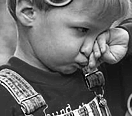Common menu bar links
Institutional links
Diseases & Conditions
Health & Safety
Research & Statistics
Agency Information
Search Box
E-mail this page
A Conceptual and Epidemiological Framework for Child Maltreatment Surveillance
Prepared by:
Davide A.Wolfe PhD and Lilian Yuan MD MSc
Child Maltreatment Section
Division of Health Surveillance and Epidemiology
Health Canada HPB Bldg. #7, Tunney's Pasture
A.L. 0701D
Ottawa, Ontario
K1A 0L2
Editors Lil Tonmyr and Gordon Phaneuf
Publication Consultant: Janet Doherty
 |
Child Maltreatment
Division |
Table of Contents
Reviewers and Stakeholders
Forum on Child Maltreatment Surveillance: Issues and
Options - December 14, 1999
Participants List
1 Conceptual Framework for Child Maltreatment Surveillance
- Introduction And Purpose
- The Importance of Surveillance
- Purpose of the Conceptual Framework
- Definitions Of Child Maltreatment
- Legal, Social Science and Child Welfare Perspectives
- Epidemiology
- Incidence and Prevalence Studies
- United States
- Canada and Australia
- Reporting Issues
- Demographic and Situational Findings
- Children
- Adult and Juvenile Offenders
- Circumstances and Outcomes
- Incidence and Prevalence Studies
- Theoretical Contributions
- Causes of Maltreatment
- Offender Characteristics
- The Context of Maltreatment
- Consequences of Maltreatment
- Developmental Psychopathology
- Theories of Stress and Resilience
- Causes of Maltreatment
- Conceptual Framework For Child Maltreatment
Surveillance
- Organization and Approach
- Selected Key Determinants of Population Health
- Levels of Action
- Income and Social Status
- Community Level
- Societal/Cultural Level
- Social Support Network
- Community Level
- Education
- Community Level
- Societal/Cultural Level
- Physical Environment
- Community Level
- Personal Adjustment and Coping Resources
- Individual Level: Child Victim
- Individual Level: Adult Offender
- Child Development
- Individual Level: Adult Offender
- Family Level
- Community Level
- Societal/Cultural Level
- Organization and Approach
- Analysis
- Development of a National Capacity for Child Maltreatment
Surveillance
- Priorities, Partners, and Resources
- Things to Consider
- Implications of Child Maltreatment Surveillance
- Public Policy and Public Health
- Prevention
- Development of a National Capacity for Child Maltreatment
Surveillance
- References
2 Epidemiological Framework for Child Maltreatment Surveillance
- Introduction
- Background: Public Health Surveillance
- Characteristics Of Surveillance Systems
- Usefulness
- Simplicity
- Flexibility
- Acceptability
- Sensitivity
- Specificity
- Representativeness
- Timeliness
- Resources
- Examples Of Surveillance Systems
- Infectious Disease Surveillance
- Injury Surveillance
- Principles Applicable to Other Systems
- Be Selective in Conditions for Surveillance
- Ensure Effective Communication with Collaborators
- Build Surveillance Systems in Stages
- Make Ongoing Improvements and Upgrades
- Child Maltreatment Data
- Variability in Child Abuse and Neglect Definitions
- Different Levels of Identification of Child Abuse and Neglect
- Multiple Forms of Child Maltreatment
- Incidence and Prevalence
- Duplicate Cases
- Variability of Available Information
- Functional And Operational Issues
- Collaborative Partnerships
- Setting Objectives
- Case Definitions
- Existing Data Sources
- Child Welfare Databases
- Statistics Canada Mortality Database
- Canadian Centre for Justice Statistics Database
- Police Statistics
- Chief Medical Examiner/Chief Coroner Statistics
- Canadian Incidence Study of Reported Child Abuse and Neglec
- Population Survey
- Hospital Morbidity Database and Discharge Abstract Database
- What is the Population Under Surveillance?
- Frequency of Data Collection and Dissemination
- Data Variables
- Characteristics of the child
- Maltreatment circumstance
- Characteristics of the alleged perpetrator(s)
- Characteristics of caregiver(s)
- Characteristics of household
- Data Transfer and Privacy
- Data Storage, Analysis and Dissemination
- Other Issues
- Integration with Health Canada's Surveillance Activities
- Surveillance of Risk Indicators Associated with Child
Maltreatment
- Individual/Family Level
- Community Level
- Surveillance of Behavioural Indicators Associated with Child Maltreatment
- Unreported Cases
- Cultural Relevance
- Methodology Issues
- Underestimation of Cases
- Biases
- Duplicate Records
- Choice of Denominators
- Summary
- References
- Figure 1 - Scope of Canadian Incidence Study of Reported Child Abuse and Neglect
- Figure 2 - Demographic and Situational Factors
- Figure 3 - Conceptual Framework Overview
- Figure 4 - Income and Social Status
- Figure 5 - Social Support
- Figure 6 - Education
- Figure 7 - Physical Environment
- Figure 8 - Personal Adjustment and Coping Resources
- Figure 9 - Child Development
- Table 1 - Priorities for Key Variables in the Conceptual Framework, with Examples of Partnerships
- Table 2 - Canadian Child Maltreatment Data Sources
A Conceptual and Epidemiological
Framework for Child Maltreatment Surveillance ![]()
87 Pages - (773 KB) in PDF Format

